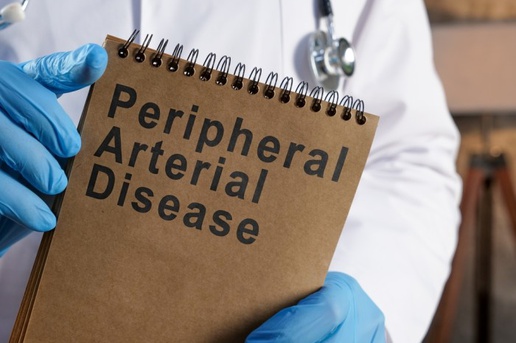Things you Should Know about Peripheral Artery Disease (PAD)
Aug. 23, 2022
Peripheral artery disease is when the arteries have reduced flow of blood towards the legs.
In peripheral artery disease, the legs do not receive the requisite share of blood flow which causes constant pain in the leg. There is a fat deposit build-up in the arteries of the legs, which restricts the flow of blood into the arms or legs. Peripheral artery disease is usually improved by following up with a healthy diet, a good exercise routine and avoiding the habit of smoking and use of tobacco.
The symptoms of peripheral artery disease are:
- Claudication pain in the calf while doing exercise or while walking. The pain can range from mild to severe.
- Coldness or numbness in either of the legs.
- Weak pulse in arms or legs
- Painful cramping in the hips, thighs or calf muscles.
- Skin colour changes on legs or arms.
- Slower growth of toe nails
- Erectile dysfunction
- Slow hair growth
When the pain starts interrupting the sleep schedule and daily activities, it is time to see a doctor and confirm whether you have peripheral artery disease or PAD.
Facts/ Things you Should Know about Peripheral Artery Disease (PAD)
- The symptoms of PAD aren’t easy to spot. You might be having PAD for a very long time, and you may not even realise it. It may occur after continuous exercise and might go off after you rest. These symptoms will not be given due care, which causes them to elevate at a later stage. A burning sensation on the limbs or heaviness is called claudication while there is constant movement involved. It happens when the arteries narrow down restricting the blood flow to the legs or arms while moving or exercising. People usually relate such pains with ageing and never heed it. Things become complicated when it becomes severe and symptoms like non-healing wounds.
- As peripheral artery disease causes blockages in arteries, it can cause major complications if the arteries are blocked near the stomach, brain or heart. It can cause further complications like aneurysms, strokes or other cardiovascular symptoms. When untreated or undiagnosed, it can cause high mortality rates in humans.
- Peripheral artery disease is one of the reasons for heart attacks. The chances of having atherosclerosis, especially in the coronary arteries are high. A fair percentage of people with PAD have affected coronary arteries, and thereby higher chances of heart failure, strokes and heart attack. The increased risk of blockages with PAD makes the patient three times more susceptible to the chances of a heart attack. The treatment scenario varies from person to person based on such factors. The complications of PAD can further extend to critical limb ischemia which happens when the blood flow is very minimal to the limbs, which can lead to the slow death of the tissues because of the lack of oxygen flow and leads to the amputation of the affected area. The amputation of the leg can be prevented if the treatment can restore the blood flow into the leg.
- There is a test which can help diagnose whether you are suffering from PAD. The test is called Ankle Brachial Index (ABI). ABI uses ultrasound to detect the blood flow to your groine, arms and legs. If the test finds any probability of low blood flow to these areas; then the doctor can somehow confirm the fact that you are having blockages and the reason can be PAD. The test is simple and can be done without much stress.
- Some people are more prone to PAD than the other fair share of the population. People who have some medical conditions will be more prone to this disease. Risk can be diverse with respect to lifestyle, race, age, gender and other factors. The chances of PAD can be likely seen in people who are:
- Diabetic
- Aged above 65 years. There is a 5% chance for all adults in their lifetime to contract PAD.
- Having high-cholesterol
- Having high blood pressure
- Having parents or siblings who have PAD
- African-Americans
- Smokers
- By the age of 70, both men and women have equal chances of contracting PAD. If you have had a heart-related condition in the past or suffering from it in the present, then it is advised that you take a screening test to confirm the same.
- Peripheral artery disease can be prevented if you can incorporate some changes into your daily routine. Lifestyle factors are a major reason for PAD, and even after diagnosis, Doctors suggest lifestyle changes are first and foremost for PAD. Lifestyle changes include:
- To quit smoking
- Maintaining the blood sugar levels if the patient has diabetes
- Being active includes at least one exercise routine.
- Maintaining a healthy weight.
- A healthy diet which has low saturated fat.
- The treatment of PAD is decided after the close monitoring of the patient. It is based on the phase of atherosclerosis of the patient. When the blockage is detected in the arteries, the slow invasive treatment removes the plaques and restores the blood flow into the areas with blocked arteries. Procedures like angioplasty and atherectomy are preferred treatments, which are done after making a small incision in the arteries to analyse and understand the stage of atherosclerosis.
